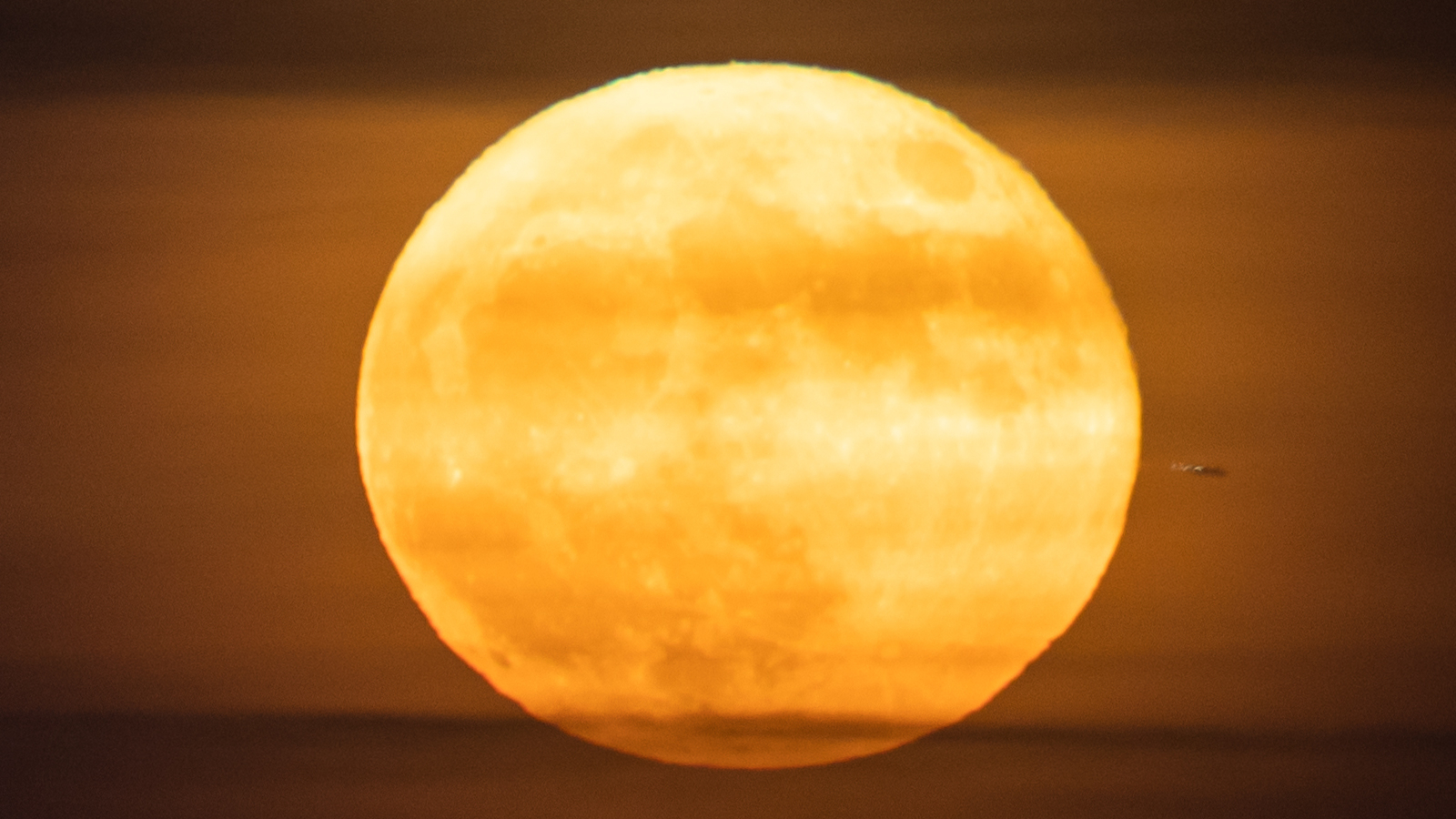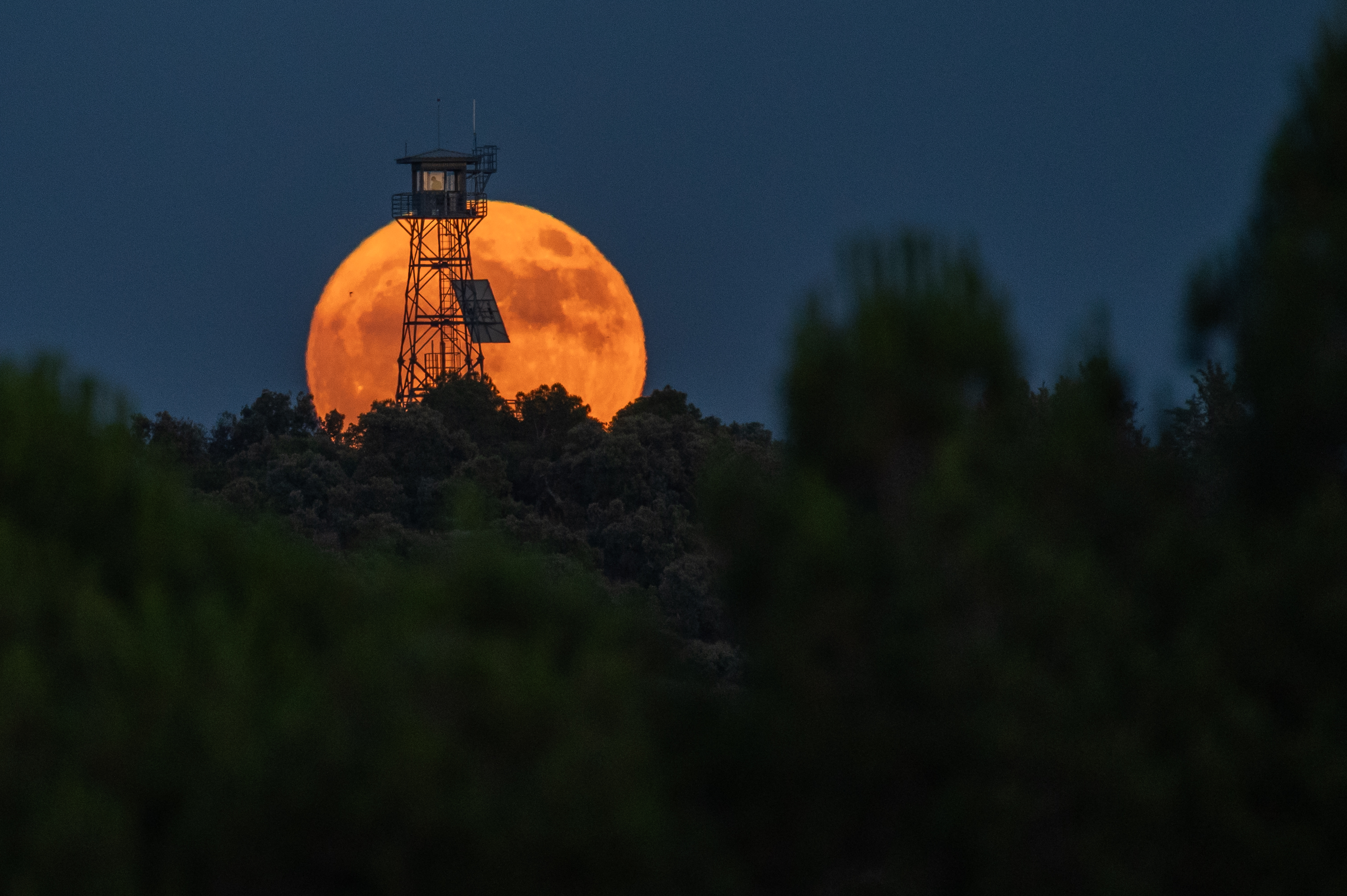June's full 'Strawberry Moon' illuminates the night sky this week: Here's how to see it
Don't miss the 2025 full "Strawberry Moon" when it rises above the southeastern horizon on June 10.

This month's full "Strawberry Moon" graces the night sky on June 11, putting on a spectacular show as the fully-lit disk of Earth's natural satellite rides low over the southeastern horizon.
What is a full 'Strawberry Moon'?
A full moon occurs each month when the moon is positioned opposite the sun in Earth's sky, which allows the lunar disk to be fully lit from our perspective. June's full moon is commonly referred to as the "Strawberry Moon" in America, but the nickname isn't a reference to its color (though there's a decent chance it will take on a yellow-orange hue when near the horizon due to our atmosphere's habit of scattering certain wavelengths of light).
Rather, the evocative name is thought to have been coined by the Native American Algonquian tribes in reference to the short strawberry harvesting season that falls around this time of year, according to the Old Farmer's Almanac. Other cultures have dubbed the event the Blooming Moon, Green Corn Moon, Birth Moon and Hatching moon, to name a few.
Regardless of what you call it, one thing is certain: June's full moon is sure to put on a spectacular display when it lights up the night sky next week.
When and where will the Strawberry Moon rise?
This month's full moon phase will occur during the early hours of June 11 for viewers in New York, at 3:44 a.m. EDT (0744 GMT). The exact timing of the event will vary depending on your location on Earth, so be sure to check a trusted website such as TimeandDate.com for specifics about your locale.
The lunar disk will appear fully lit to stargazers across America when it rises above the southeastern horizon at sunset on June 10, marking the best opportunity for the astrophotography community to capture the Strawberry Moon close to the horizon.

Earth's natural satellite will appear particularly large to the naked eye at moonrise thanks to the little-understood "moon illusion," a strange effect wherein the human brain convinces us that objects are larger than they actually are when in close proximity to the horizon.
Breaking space news, the latest updates on rocket launches, skywatching events and more!
Each year, June's full moon treads a predictably low path across the spring sky due to its close proximity to the summer solstice — the time of the year when the sun is at its highest. This year’s Strawberry Moon will ride exceptionally low — the lowest in decades according to stargazing site Earthsky.org — thanks in part to a phenomenon that sees the moon's tilted orbit dragged around by the sun's gravitational influence.
Editor's Note: If you snap a picture of the full 'Strawberry Moon' and want to share it with Space.com's readers, then please send your photo along with comments about the shoot, your name and location to spacephotos@space.com.
Join our Space Forums to keep talking space on the latest missions, night sky and more! And if you have a news tip, correction or comment, let us know at: community@space.com.

Anthony Wood joined Space.com in April 2025 after contributing articles to outlets including IGN, New Atlas and Gizmodo. He has a passion for the night sky, science, Hideo Kojima, and human space exploration, and can’t wait for the day when astronauts once again set foot on the moon.
You must confirm your public display name before commenting
Please logout and then login again, you will then be prompted to enter your display name.
